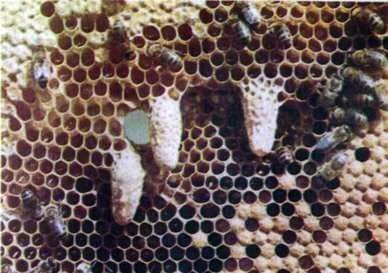
In the nest of the family, from which the swarm came out, there are always a lot of good mature swarm queen. Bees grow queens for their new families – swarms. Moreover, they are taken out with a large margin, as if just in case. Most bee queen cells do not use. If, after the swarm’s release, the family reacts to sharply changed conditions of the environment, it does not swarm, then one of the queens, the first one out of the mother liquor, filled with the thirst for domination in the family, will destroy all queen cells and kill their sisters. Promote this even bees, which until then vigilantly guarded queen cells.
Valuable swarms from good families can be used to organize new families, and to replace old worn out queens. After all, as you already know, the queens older than two years old try not to keep, since their egg-laying noticeably falls.
If desired, you can get more queens from the family. When the bowls appear in it, one honeycomb with brood should only be cut 2-3 cm. In this shortened honeycomb along the entire cut, bees will build many bowls. In them, the uterus and put the eggs.
Mature queen cells with a sharp knife, better with a scalpel, carefully, so as not to damage, cut out and inserted into the uterine cells. They are placed in the nest, between the slightly expanded frames. As soon as the uterus is born, they are attached to the new families in the same cells or replace them with old uterus.
Липа нектар. Жизнь пчелиной семьи.
Young Beekeeper